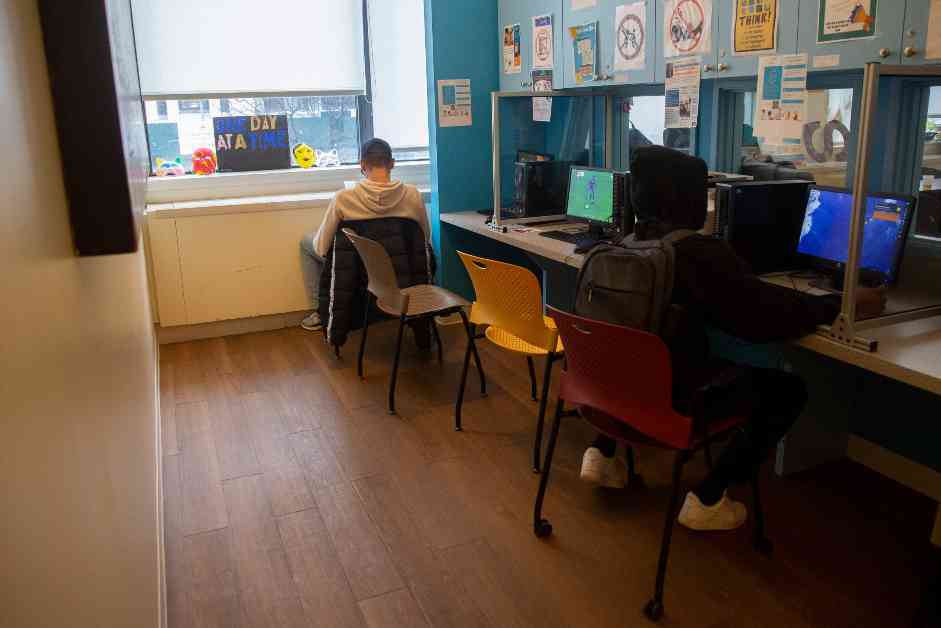The number of homeless youth who were denied shelter in the city has seen a significant increase this year, raising concerns among advocates and officials alike. Between January and July of 2024, over 1,100 young people were sent back to the streets, marking a historically high number driven by the asylum-seeker crisis. The Department of Youth and Community Development recently released data showing a steady rise in “youth not placed,” indicating that shelters and drop-in centers funded by the city were unable to locate beds for runaway and homeless youth aged 16 to 24.
Growing Concerns and Statistics
In the first six months of 2024, 1,127 young individuals were denied access to shelter beds, with no one declining a bed. This represents a stark increase from the 234 young adults who were turned away between July 1 and December 31, 2023, including four who declined shelter. Comparatively, in the first half of 2023, only nine young adults were denied beds, with two declining shelter. The data reveals a troubling trend of more young people facing homelessness and struggling to find shelter.
Available Beds and Agency Efforts
Despite the rising numbers of homeless youth, there are 789 available beds through DYCD-funded runaway and homeless youth providers, along with 338 separate beds for homeless young adults in the city. Mark Zustovich, a spokesperson for DYCD, emphasized that the agency has assisted over 500 young adults in transitioning to their own homes, although the specific timeframe was not provided. He stated, “While this report indicates that DYCD’s runaway and homeless youth system was fully utilized at the beginning of the calendar year, in the final two months of the reporting period, the number of young people not able to access an RHY youth shelter bed dropped significantly.”
Challenges and Contributing Factors
The influx of asylum seekers has been cited as a significant factor contributing to the increased demand for shelter beds, with most individuals unable to access youth beds being adults who have access to the main homeless shelter system in the city. While the city does not track the immigration status of shelter youth, the impact of asylum seekers on the shelter system is evident. Despite efforts to connect young people to available resources or refer them to other programs for critical services, the challenges persist.
Legal Settlement and Oversight
In 2020, a legal settlement ensured that 16- and 17-year-olds seeking shelter would receive beds at age-appropriate city facilities, following a class-action lawsuit filed by the Legal Aid Society. However, the settlement did not extend to 18- to 24-year-olds, who make up a significant portion of those turned away from shelter beds. The monitoring period for the settlement ended in 2023, potentially contributing to the increase in street homelessness among young adults. Theresa Moser from the Legal Aid Society’s Juvenile Rights Project noted that the expiration of the settlement, coupled with a rise in youth homelessness and asylum seekers, has led to more individuals being turned away from shelter.
Mayor’s Efforts and Challenges
Mayor Eric Adams unveiled a plan in 2022 to end youth homelessness, supported by a $15 million federal grant aimed at making it easier for homeless youth to secure housing. The plan included funding for street outreach programs, job creation for youth with homelessness experience, and the development of new rapid rehousing units. Despite these initiatives, challenges persist in addressing the needs of homeless youth, with some efforts to provide rent-subsidy vouchers for residents in the youth shelter system facing obstacles.
Ongoing Support and Advocacy
Advocates and organizations continue to push for solutions to address the rising number of homeless youth in cities, emphasizing the importance of tailored shelter options and support services for this vulnerable population. Efforts to advocate for policy changes and increased funding for youth homelessness programs are ongoing, with a focus on providing comprehensive support to prevent young individuals from falling through the cracks of the shelter system.
In conclusion, the escalating number of homeless youth facing challenges in accessing shelter beds highlights the urgency of addressing the underlying issues contributing to youth homelessness. As advocates, officials, and community members work towards solutions, it is crucial to prioritize the needs of homeless youth and ensure that they have access to safe and supportive environments to help them transition out of homelessness.
